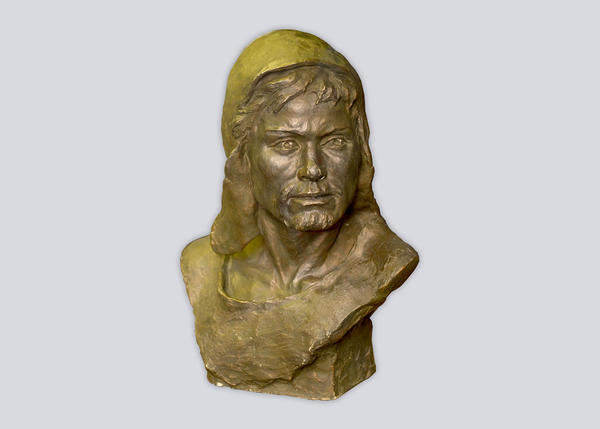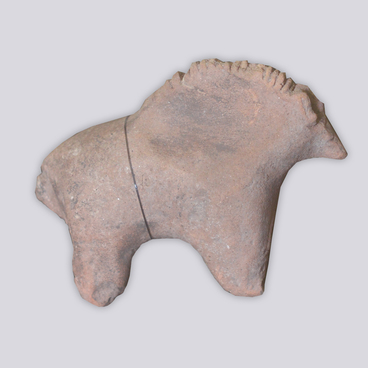Ananyino culture is the archaeological culture, which was spread in the areas of the Volga, the Kama, the Vyatka and the Belaya rivers from the IXth to the IIIrd century. Researchers believe that it emerged as a result of ethnic amalgamation of the population of the Kama region with the Trans-Ural community. The culture got its name from the ancient burial ground, which was discovered in 1858 near the village of Ananyino. The burial ground is nowadays a national-level listed monument. Archaeological finds uncovered on its territory are kept in the museums of Moscow, St. Petersburg, Kazan and other cities.
The bust of an Ananyino-era man
Creation period
1950 (?)
Dimensions
43x37 cm
Technique
Tinted gypsum
Exhibition
2
Open in app#1
Galina Lebedinskaya
The bust of an Ananyino-era man
#9
#10
Researchers believe that Ananyino tribes belonged to the Finno-Ugric language group. People settled on the banks of these rivers engaged in cattle breeding, hunting, berry gathering, nut hunting, fishing and, possibly, agriculture. They were able to work on wood and leather, create clay dishes and weave clothes. The Ananyino people actively traded with the Siberian and Caucasian tribes, as well as with the Scythians. This ancient society was patriarchal, and historians have no information, so far, about the beliefs of the local population.
#11
The Ananyino people were quite short in stature. The tallest men were 166 centimetres tall and women 153 centimetres tall. The sculpture presented in the exhibition depicts an ancient Ananyino man with pronounced Mongoloid facial features: a flat face, a low nose bridge and a slightly protruding nose. However, not all of the Ananyians looked like this, as Caucasians lived in the southern and southwestern parts of the region where this culture was spread.
#12
The author of this sculpture was the anthropologist Galina Lebedinskaya. She reconstructed the appearance of an ancient man based on the archaeological finds from the Ananyino burial ground. For the purpose, the scientist used the Gerasimov’s method - a special way of recreating human face features based on the structure of his or her skull.
#8
Under this method, the skull is first restored, measured and drawn up. Then, the face oval, soft tissues, eyes, a mouth, a nose, brow arcs, lips and ears are gradually formed. Hair is the last to be recreated and it is often done quite conventionally.
#13
the National Museum of the Republic of Tatarstan
read morehide
00:00
00:00
1x
The bust of an Ananyino-era man
Creation period
1950 (?)
Dimensions
43x37 cm
Technique
Tinted gypsum
Exhibition
2
Open in app
Share




